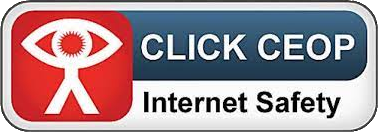Textiles
Fashion is not something that exists in dresses only. Fashion is in the sky, in the street, fashion has to do with ideas, the way we live, what is happening
Coco Chanel
Textiles is an inspiring, rigorous and practical subject. Using creativity and imagination, pupils design and produce products that solve real and relevant problems. Students acquire a broad range of subject knowledge and draw on cross-curricular disciplines becoming resourceful, innovative and enterprising.
KS3 Textiles
Key Stage 3 Textile Design
At Key Stage 3 pupils are taught:
- to use a range of textile techniques to use as a basis for exploring their own design ideas
- to use a range of textile techniques, including tie dye, transfer printing, hand embroidery, stencilling, applique, embellishment and sewing machine skills to increase their proficiency in the handling of different materials & pieces of equipment
- to analyse and evaluate their own work, and that of others, in order to strengthen their understanding and the visual impact or applications of their work
- about the history or context of art, craft, fashion & design, including styles and major movements from different times and cultures up to the present day
| Year 7 | Year 8 | Year 9 |
|---|---|---|
|
|
|
KS4 Textile Design
Please click here for the KS4 GCSE Edexcel Art and Design: Textile Design Specification 1TE0
The Textile Design GCSE course offers students a versatile subject that involves the creation, selection, manipulation and application of a range of materials such as fibres, yarns and fabrics, and processes such as weaving, knitting, stitching and printing to create designs and products. The projects are more open-ended than at KS3 Textiles and allow the students to explore more individual ideas and particular techniques, but are linked to an overall theme BOTANICAL GARDEN.
Textiles Design includes the study of art textiles, fashion design & illustration, costume design, printed & dyed textiles, surface pattern, stitched/embellished textiles, soft furnishings/textiles for interiors, digital textiles & installed textiles. Students will study and analyse critically, evaluate and reflect on their own work and the work of textile artists, designers and crafts persons. They will be expected to demonstrate the ability to record ideas, observations, insights and independent judgements visually and through informative written annotations, using suitable specialist vocabulary.
Students will develop and demonstrate a skilful and sensitive command of these techniques and media. A large proportion will be of a practical nature and students will be encouraged to work in an independent manner.
Students are encouraged to work from observation and individual research in order to develop their own ideas and style. Students are expected to keep a sketchbook or work journal that supports each project and should be able to continue work at home. All coursework and the mock exam work completed in years 10 and 11 become their personal portfolio and contribute to the final GCSE grade.
In Year 11, from January onwards, students work on their externally set exam assignment and prepare for their final exhibition.
It is essential that all four Assessment Objectives are met by each unit of work and the final GCSE grade is weighted as follows:
Component 1 – Personal Investigation: Coursework 60%
Component 2 – Externally Set Assignment: Exam 40%
KS5 Textile Design
Please click here for the KS5 A Level Edexcel Art and Design: Textile Design Specification 9TE0
Course Length: A level, two years
Student Course Criteria
Textile Design A level is the right subject for you if you:
- have a proven interest and aptitude in textiles, art and design and wish to further develop their ideas, skills and knowledge.
- relish thinking independently and developing, refining and communicating your ideas
- enjoy analysing your own work and the work of others to inform your ideas
- like experimenting and taking risks in order to solve problems
- love producing personal creative outcomes
Course Overview
For the purposes of this qualification, textile design is sub-divided into the following three disciplines:
● Textiles for interiors
● Fine art textiles
● Fashion textiles.
You will work with a broad range of media in mostly practical activities such as printing, fabric painting, appliqué, batik, embroidery, weaving, yarn and fabric dyeing, painting and drawing. These processes are developed in a highly individual and creative way and will enable you to respond to the visual world in an expressive and imaginative manner. You will develop an awareness of different roles, functions, audiences and consumers of art, craft and design in contemporary and past societies and cultures. You will develop investigative, analytical, experimental, practical, technical and expressive skills, aesthetic understanding and critical judgement. It will also enable students to develop intellectual, imaginative, creative and intuitive capabilities.
Course Assessment
Two units over the two years for A Level:
Component 1 – Personal Investigation: Coursework 60%
Component 2 – Externally Set Assignment: Exam 40%
Further Opportunities Following this Course
Students often go on to further studies in art, fashion, costume design, architecture and design, usually at Art College or further education. These studies lead to many related careers, which might include graphics, advertising, publishing, fashion, textiles, architecture, interior & industrial design and other arts, crafts, gallery and museum work.
Securing a Place at Post-16
The best foundation for success in A level Textile Design is a grade 6 or above in Art or Textiles or DT GCSE together with the enthusiasm, commitment and determination to develop your interests and abilities. You may be considered if you have a portfolio of work to show and an enthusiasm for the subject.
Please refer to our entry policy.
Our Curriculum Deputy Headteacher, Ms J Foster, will be happy to supply further detail and more information if required.
Please contact her: ecsgeneral@enfieldcs.enfield.sch.uk or telephone 020 8363 3030.
